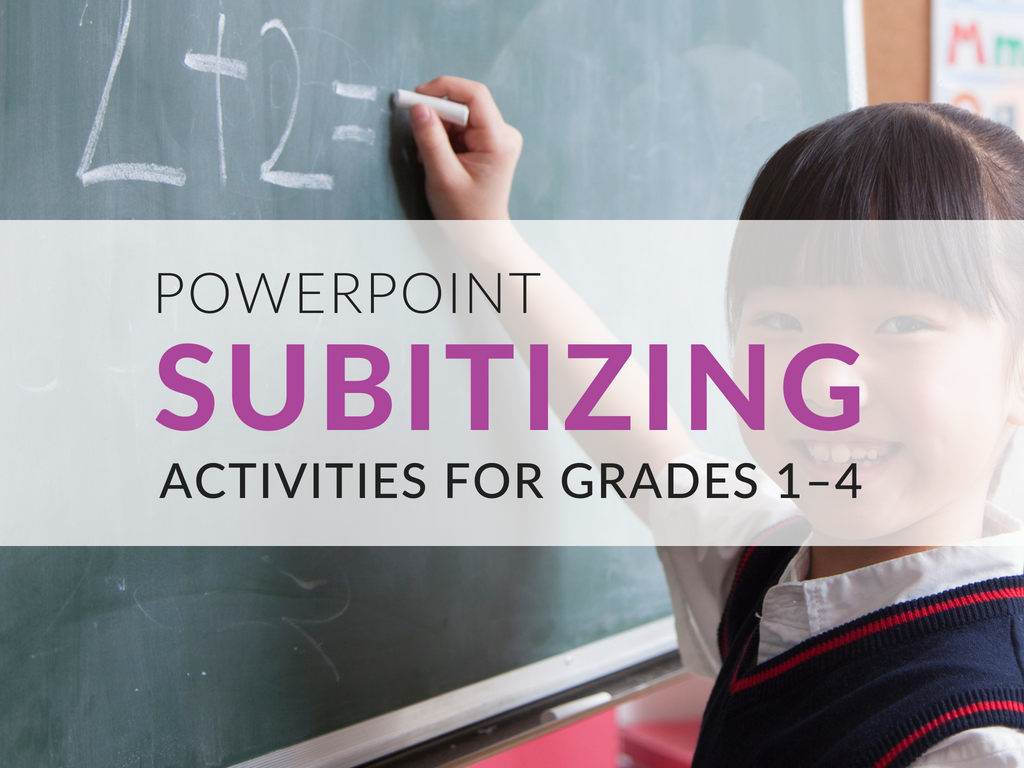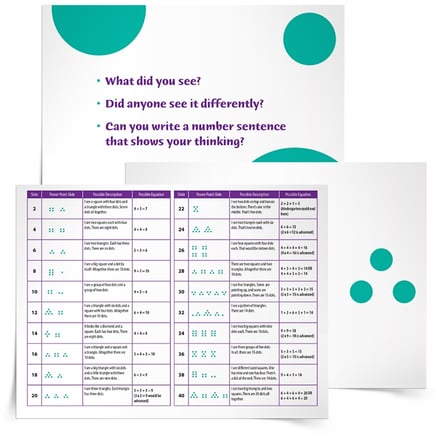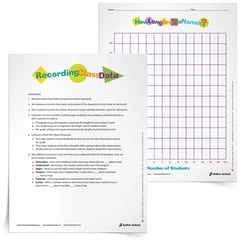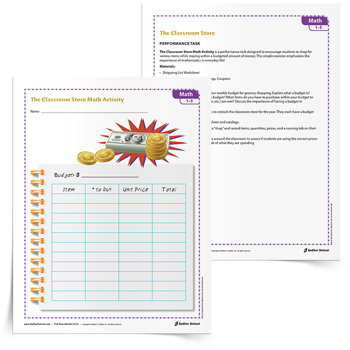August 20, 2020 3-5-operations-and-algebraic-thinking, k-2-operations-and-algebraic-thinking
Subitizing PowerPoint Activities for In-Person or Online Classrooms, Grades 1–4
By: Jeff Todd
I've used subitizing PowerPoint slides in my class over the years, at every level. This number sense activity uses multiple representations of numbers to aid math language development for primary students and English language learners. In this article, you'll get my free subitizing PowerPoint download and directions on how to use this activity in your in-person or online classroom.
How to Use the Subitizing PowerPoint Slides
With these subitizing activities students are encouraged to see patterns and to describe them, noticing that other students perceive the same objects differently. But the most important aspect of this activity is for students to connect the numbers represented as dots to equations. After all, we are talking about multiple representations — that is, seeing number as dots, as number words, and composed using operations.
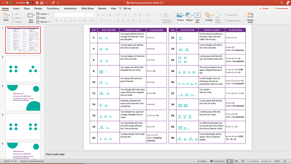 This PowerPoint can be used in Grades K–4. With kindergarten to second grade students, use the multiple representations to flexibly count, add, and subtract. As students move to third and fourth grade, use the same models and more challenging ones to reinforce and strengthen the idea of multiplication and number sentences with two or more operations.
This PowerPoint can be used in Grades K–4. With kindergarten to second grade students, use the multiple representations to flexibly count, add, and subtract. As students move to third and fourth grade, use the same models and more challenging ones to reinforce and strengthen the idea of multiplication and number sentences with two or more operations.
The subitizing activities are very simple. Project the multiple representations of numbers as dots in various arrangements for just a few seconds (exactly how many depends on your students’ ability). Then, after removing the image, ask students to tell you what they saw. For example, a student might respond after seeing four groups of three dots, “I saw four groups of three… that would be twelve.” Students at different grade levels might suggest the equations 3 + 3 + 3 + 3 = 12 or 3 x 4 = 12.
Show the dot representation briefly
-
Ask, “What did you see?”
-
Ask, “Did anyone see it differently?”
-
Ask, “Can you write a number sentence that shows your thinking?”
One of the most powerful and wonderful things about this activity is that students can come up with a variety of responses! These responses often lead to different multiple representations for numbers (e.g., 3 + 3 + 3 + 3 = 12 and 4 + 4 + 4 = 12). Seeing that the same number can be decomposed in many ways might really open up students’ minds to thinking differently. This activity engages students in applying Mathematical Practice 1 (Making Sense of Problems) by seeing the relationship between the dots and equations and by seeking to understand the other students’ approaches (Mathematical Practice 3, Critiquing the Reasoning of Others).
This can be a great opening activity for a lesson, particularly when you need to stimulate students’ prior knowledge about number and operations or you simply want to do a factual review. You will notice that some of the slides have particular patterns.
For example, the patterns below can be seen as “triangular” numbers:
Or the following dot representations can be seen as “square” numbers:
Encourage students to look for these patterns in order to help them connect multiple representations of numbers with geometry.
You can download the subitizing PowerPoint to get this activity started in your in-person or online classroom. I have created them at different levels, using only the numbers 5 to 20, using numbers up to 100, and using a set of challenge problems.
ADDITIONAL RESOURCES:
|
|
|



